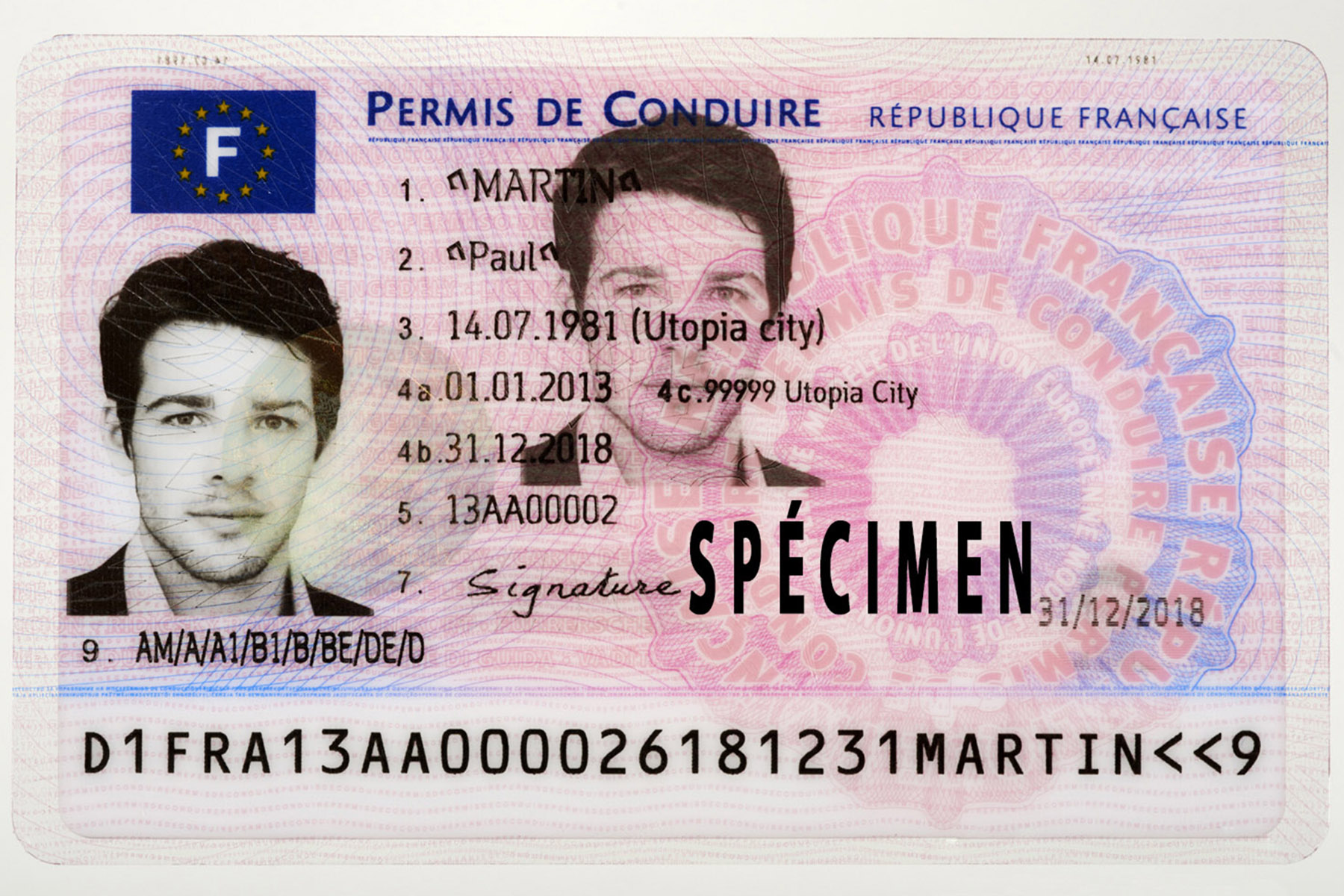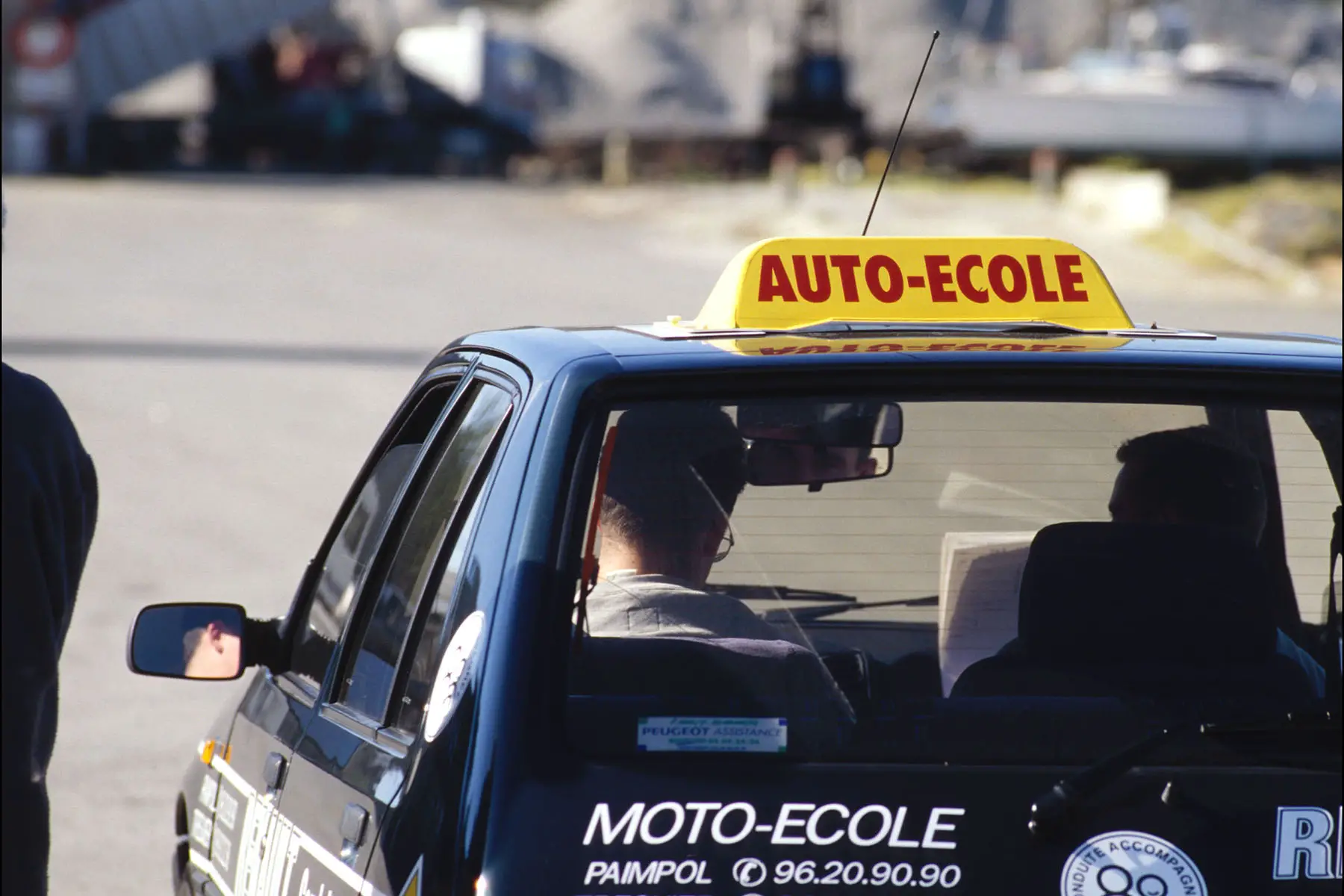If you’ve only experienced the Parisian roads, driving in France can feel daunting. Luckily, traffic outside the capital isn’t all too bad, and learning how to drive is relatively easy (once you get the hang of it). And if you already have a valid foreign license, exchanging it for a French one is as easy as pie.
Here’s what you need to know:
- Driving permits in France
- Getting a driving license in France
- Driving lessons in France
- Driving tests in France
- Practical driving tests in France
- Before getting on the road
- Driving in France with a foreign license
- Exchanging a foreign permit in France
- Renewing a (damaged) French driver’s license
- In case of a stolen or lost driver’s permit
- French driver’s licenses for other vehicles
- Useful resources
Groupama
Check out Groupama auto insurance for a reliable companion on the road. With comprehensive coverage, competitive rates, and excellent customer service, they ensure peace of mind while driving. From accidents to theft, their policies protect you and your vehicle. Count on Groupama for trusted auto insurance that puts your safety first.
Driving permits in France
A French driver’s license (permis de conduire or permis B) is an official document that allows you to drive in France and all member states of the European Union (EU) and European Free Trade Association (EFTA – Iceland, Liechtenstein, Norway, and Switzerland). It also serves as an official ID in most places in France.

The permit is a pink plastic card and has the size of a regular credit card. It lists your personal details, the type of vehicle you’re allowed to drive, and the license issue and expiry date. They are valid for up to 15 years, depending on your age, vehicle category, and medical record.
The front of the card has the following information:
| Number on the license | Information |
| 1 and 2 | Your full name |
| 3 | Your date of birth and place of birth |
| 4a and 4b | The start and expiry date of the license |
| 4c | The municipality in which the permit was issued |
| 5 | Your license number |
| 7 | Your signature |
| 9 | Your permit category (e.g., B for cars) |
The back of the permit contains a table with information on the different driving categories. France has four categories, including:
- AM – mopeds
- A1, A2, A – motorcycles
- B – personal cars
- C – small trucks
- D – motor vehicles that can transport up to 8 people (i.e., a bus)
French driver’s licenses fall under the responsibility of the Ministry of Ecological Transition and Territorial Cohesion (Ministère de la Transition écologique et de la Cohésion des territoires – METTC). They are issued by the National Agency for Secured Titles (Agence nationale des titres sécurisés – ANTS).
Point system against reckless driving
France has a demerit point system to punish traffic offenses. After an uneventful probationary period, all regular drivers will have 12 points to their permit. If you commit a traffic violation or cause an accident resulting in bodily harm, you will lose one or more points.
You can take a voluntary Road Safety Awareness Course (Stage de Sensibilisation à la Sécurité Routière) to recover up to four points. Alternatively, you can regain your 12 points by not committing any other traffic violations for at least two or three years.
After losing all 12 points, your license will be suspended. This can last for up to six months in normal cases and up to five years in extreme circumstances. You can get your driver’s permit back after a medical examination, although you may have to retake the driving exam.
Getting a driving license in France
To get an independent driver’s license, you must be 18 and take at least 20 hours of driving lessons. After that, when you’ve cleared the theory and practical driving tests, you or your driving school (auto école) can apply for the license online using a Harmonized Prefectural Registration Number (Numéro d’Enregistrement Préfectoral Harmonisé – NEPH).

Documents to provide include:
- Proof of identity (e.g., your ID card)
- Proof of residence, no older than six months (e.g., with Justif’Adresse or a recent utility bill)
- Recent photo (in digital from an ANTS-authorized photographer or paper format)
- Driving License Examination Certificate (Certificat d’Examen au permis de Conduire – CEPC) to prove you passed the practical driving test
- If you are a non-EU/EFTA national, your residence card
- If you are under 21, a Level 2 School Road Safety Certificate (Attestation Scolaire de Sécurité Routière de niveau 2 – ASSR2) or Road Safety Certificate (Attestation de Sécurité Routière – ASR)
Applying for a first driving permit is free and takes about five working days to be processed.
Driving under 18 in France
It is also possible to start driving lessons at an earlier age. You can start accompanied driving instructions (apprentissage anticipé de la conduite – AAC) as early as 15 and take the practical test at age 17. If successful, you’ll have earned your CEPC. This certificate represents a valid driver’s license for four months.
Keep in mind, however, that under-18-year-olds can only get behind the wheel when accompanied by a guardian or supervisor (accompagnateur). The accompanying person must have had a permit for at least five years, and take out additional car insurance.
Beginner’s driving license
During the first three years, new drivers will have a probationary driver’s permit and must have an A-sign on the rear of their vehicle. This beginner’s permit starts out with six points and will get an extra two points per year. So:
| Total points | |
| During the first year of your license | 6 points |
| During the second year | 8 points |
| During the third year | 10 points |
| During the fourth year | 12 points |
As said before, traffic violations can result in you losing points. If you lose at least three points at the same time, you must undergo a mandatory Road Safety Awareness Course.
After three years, your probationary license will upgrade automatically to a regular one.
Driving lessons in France
By law, you are required to take at least 20 hours of driving lessons (conduite supervisée) if you drive a manual stick, and 13 hours if you drive automatic transmission. First-time drivers might need additional driving lessons as well; in 2020, students required an average of 35 lessons before they could take the practical exam.

Driving lessons are quite expensive in France. Hourly rates for lessons range from €40 to €60 an hour. Some driving schools also offer fixed-price packages that include a set number of lessons (but require double pay when there is overtime). When choosing your school, you should always look at the success rate.
On average, students paid between €1234 and €2000 for their French driver’s license (2023).
If you are an apprentice, you can get a €500 benefit to help finance your driving permit. For more information, visit the French government website.
Driving tests in France
To get your driver’s permit, you must pass a driving theory (épreuve théorique générale commune – ETG) and practical test (épreuve pratique). Aspiring drivers with disabilities or certain health conditions might also need to take a medical exam with a registered doctor. The medical advice is valid for two years.
French driving tests are quite difficult, with only 59.2% of applicants passing the practical exam on the first try. Interestingly, 62.5% of men and just 54.4% of women earned their driving licenses in 2021.
Driving theory exam
The driving theory test, commonly known as the Code, consists of 40 multiple-choice questions covering traffic laws and road safety rules.
Your driving school will give you the official Driving Instructions learning booklet, or, alternatively, you can download it from the French government website. You must keep this booklet in your car at all times while you’re learning.
Once you’re ready, you can schedule a date, time, and place for the exam on the ANTS website or the website of France’s postal service, La Poste.
Driving theory tests are conducted digitally using tablets at the test center. Questions will appear on screen and will be read aloud. The exam takes approximately 30 minutes and you must correctly answer at least 35 questions to pass. You can find example questions online, for example, at Le Permis Libre.
The results will be online within 48 hours:
- If it’s a fail, you can take the exam again after two days. There isn’t a limit to the number of times you try.
- If it’s a pass, you have five years to take the practical exam and get your driver’s permit
A regular French driving theory test costs €30.
If you live with a (learning) disability or a language barrier
There are also specific ETG exams (examen ETG spécifique) for people with certain (learning) disabilities or language difficulties.

To take advantage of this, you must disclose your issue during your registration. For instance:
| Candidate | Course of action | Solution |
| Doesn’t speak French fluently (e.g., speakers of English or Arabic) | Answer the question “understands and reads French fluently” with a no | You can hire an official translator to assist you during the exam |
| Is deaf or hard of hearing | Answer the question “suffering from a condition and/or handicap” with a yes | You can hire an official French Sign Language (Langue des Signes Française – LSF) interpreter to assist you during the exam |
| Has dyslexia, dysphasia, or dyspraxia | Answer the question “suffering from a condition and/or handicap” with a yes, and provide a medical certificate or a document recognizing your disability (reconnaissance de qualité de travailleur handicapé – RQTH). Depending on the severity, you may also need to undergo a medical examination | The exam will not be automated and you will receive extra time to complete it |
You must also send the prefecture a written request for a different location. There can only be a maximum of three translators for any given exam.
Practical driving tests in France
You can take the practical test, known as la conduite, after completing the mandatory hours and passing your theory test. Most of the time, your driving school will book a practical test for you and pay the €30 fee on your behalf. You can also apply for the exam yourself on the ANTS website.
The practical test takes around 30 mins and will be conducted in a car provided by the driving school or the local prefecture. It starts with the examiner (moniteur) checking your ID, address, test invitation, and theory test result. After that, you’ll be tested on:
- Driving the car following the instructions of the examiner
- Perform a brake-and-stop and driving in reverse
- Answer questions about different car parts, road safety, and basic first aid
Afterward, the examiner will not tell you how you did. Instead, you can check your results online within two to four days of the exam. If you’ve passed, you or your driving school can request the production of your driver’s license.

If you fail the exam, additional hours of driving lessons are recommended. You can sign up to retake the test as soon as you feel ready, and there is no longer any limit to the number of times you can retake the driving exam.
Before getting on the road
You must take out third-party liability car insurance before you can drive in France. Additional insurance that covers you for damage, accidents, and theft is optional.
You can find affordable insurance quotes in the Expatica Directory or on a French comparison site, such as:
Companies offering car insurance include:
Driving in France with a foreign license
Tourists can drive in the country using their foreign permit. If you are from outside the EU/EEA region (European Economic Area – Iceland, Liechtenstein, and Norway) and your driver’s permit is not written in French, you must have an official translation accompanying it.
If you move to France and have an EU/EEA license, you can use it for as long as it is valid (provided it’s not suspended or revoked). Those with a permit from outside the EU/EEA must exchange for a French one after one year of residency.
There is one notable exception to this rule; if you’re staying in France on a student visa, you can use your foreign permit for the duration of your studies.
International protected persons can exchange their driver’s license for a French one as soon as they file for recognition. Their permit doesn’t even have to be valid, provided it expired after they arrived in France.
Exchanging a foreign permit in France
If you want – or have – to exchange your foreign driving permit, you must do so when it’s still valid. If it is expired, you’ll effectively start from zero and have to go through the full process of obtaining a French driver’s license.

Depending on your country of origin (in French), there won’t be much hassle. You can apply for a swap on the ANTS website. You will need to provide the following:
- A photocopy of your original license (front and back)
- Proof of ID
- Proof of address (less than six months old)
- A photo code with a digital signature
- An official letter from the issuing country stating that you still have the right to drive
- If you’re from the EU, proof of arrival (e.g., your boarding ticket)
- If you’re from outside the EU (including those from the UK), proof of legal residency status (e.g., your residence card)
- Any other necessary documents
All documents need to be accompanied by a certified translation if they are not issued in French.
Exchanging your foreign driver’s permit is free, but note that the process can take several months. During that time, you are still allowed to drive on your own permit.
Renewing a (damaged) French driver’s license
If your driving permit is damaged or expired, simply request a new one via the ANTS website. You’ll need to provide:
- Proof of identity
- Proof of address (less than six months old)
- A photo ID (in digital or paper format)
- Your old license
In some circumstances, you might be required to undergo a medical examination.
The renewal process is free.
In case of a stolen or lost driver’s permit
If your license is stolen, you must report it to the local police immediately. You can do so online, but you must also make an appointment at the police station to sign your report. You will then receive a temporary driving permit that is valid for two months and exclusively meant for driving in France.
Next, you can go the ANTS website to request a new driving permit. You’ll need to provide:
- Proof of identity
- Proof of address (less than six months old)
- A photo ID (in digital or paper format)
- The police report
Should you lose your French driver’s license, you can report it on the same ANTS website. You will then receive a certificate via email or text message as proof that you have lost your permit. This certificate serves as a temporary permit for two months.
In the case of both stolen and lost permits, you must pay a fee of €25. There may also be additional regional taxes, depending on your location.
French driver’s licenses for other vehicles
You can get a driving permit for the following categories:
| License | Vehicle | Requirements |
| A1 | Light 2 or 3-wheeled scooter or motorcycle with a maximum power of 15 kW | – Minimum age 16 – Must have an ASSR or ASR |
| A2 | 2-wheeled motorcycle with a maximum power of 35 kW | – Minimum age 18 – Must have an ASSR or ASR |
| A | Any 2-wheeled or 3-wheeled motorcycle or vehicle | – Minimum age 20 for a motorcycle and 21 for a 3-wheeled vehicle with a power of over 15 kW – Must have had an A2 permit for at least two years – Must follow seven hours of mandatory lessons |
| B1 | Heavy quadricycle | – Minimum age 16 – Must have an ASSR or ASR |
| C | Vehicle that is or has: – Assigned to the transport of goods or equipment – Total weight of over 3.5 tons – Up to 9 seats (driver included) | – Minimum age 21 (unless you are following professional driver training) – Must have a B license |
| C1 | Vehicle that weighs between 3.5 and 7.5 tons | – Minimum age 18 (unless you are following professional driver training) – Must have a B permit |
| D | Vehicle that is or has: – Assigned to the transport of people – More than 9 seats (driver included) | – Minimum age 24 (unless you are following professional driver training) – Must have a B license |
| D1 | Vehicle that is or has: – Assigned to the transport of people – Up to 17 seats (driver included) – Maximum length of 8 meters | – Minimum age 21 (unless you are following professional driver training) – Must have a B permit |
Any category followed by an E means you can drive that vehicle with a trailer that weighs over 750 kg.
Useful resources
- ANTS – the official website for all licensing procedures
- Sécurité Routière – the official website of the French Road Safety Department, covering a wide range of topics regarding driving in France
- Service-Public.fr – the official government website with information on driving permits, tests, and requirements
- Your Europe – the official EU resource for road rules and safety in France




